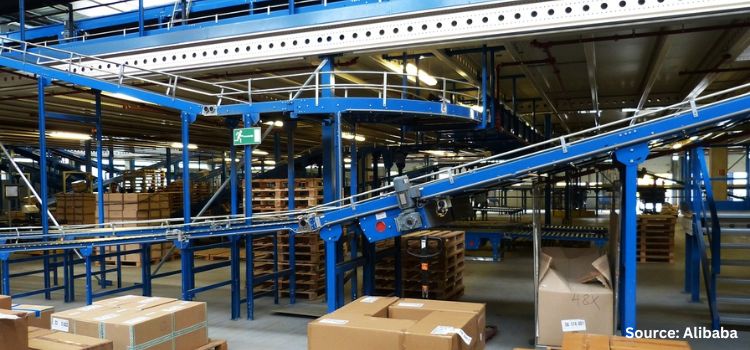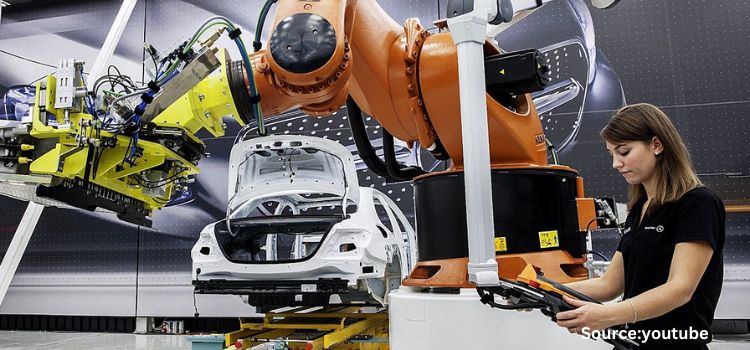From Manual Labor to Machine Precision: The Rise of Warehouse Automation
17-Feb-2025

Introduction
Warehouse automation has become increasingly popular in recent years as businesses seek to streamline their operations and increase efficiency. Use of machines and technology has enabled warehouses to move from manual labor to machine precision. By automating tasks that were once performed manually, such as inventory management, order fulfillment, and shipping, businesses are able to reduce time and resources required to complete various tasks. In this blog post, we will explore various aspects of warehouse automation and how it revolutionizes supply chain management.
What is Warehouse Automation?
Warehouse automation involves use of various technologies and machinery to automate tasks that were once performed manually. These include tasks such as inventory management, order fulfillment, and shipping. Warehouse automation involves a variety of technologies, such as robotics, automated storage & retrieval systems (AS/RS), and conveyor systems.
Benefits of Warehouse Automation
There are a number of benefits of warehouse automation, however, the most significant benefit is increased efficiency. Automated systems can perform tasks faster and more accurately than humans, reducing time & resources required to complete various tasks. Automation also helps to reduce errors, leading to fewer mistakes and enhanced overall quality.
In addition, another major key benefit of warehouse automation is increased scalability. Automated systems can handle larger volumes of goods and orders than manual systems, making it easier to scale up operations as demand increases. Automation also helps to reduce labor costs as fewer workers are required to perform tasks such as order picking and packing.
Exploring Key Elements of Warehouse Automation for Efficient and Streamlined Operations
Warehouse automation involves use of technology & machinery to streamline and optimize processes involved in receiving, storing, picking, and shipping products within a warehouse. Various aspects of warehouse automation include:
Goods receiving: Automated goods receiving involves use of technologies such as RFID (Radio-Frequency Identification) and barcodes to track and record incoming shipments. This allows efficient inventory management and reduces the risk of errors in receiving.
Storage and retrieval: Automated storage and retrieval systems (ASRS) use robotic systems to move and store products within warehouses. This eliminates the need for manual labor and allows more efficient use of space.
Order picking: Automated order picking systems use robots or automated guided vehicles (AGVs) to retrieve products and bring them to picking stations. This reduces the time and labor required for order picking and improves accuracy.
Packaging and shipping: Automated packaging and shipping systems can sort & pack orders, apply shipping labels, and prepare products for shipment. This reduces the need for manual labor and ensures orders are prepared correctly & efficiently.
Inventory management: Warehouse automation systems enable tracking inventory levels in real-time, allowing better planning and optimization of warehouse operations. This includes automated inventory counts and tracking of product movements throughout the warehouse.
Data analysis: Automation systems can also generate data on warehouse operations, which can be used for analysis and optimization of processes. This includes identifying constraints, optimizing product placement, and improving efficiency.
How is Warehouse Automation Revolutionizing Supply Chain Management?
Warehouse automation is revolutionizing supply chain management by transforming traditional warehouse operations into highly efficient, data-driven processes. By integrating advanced technologies & machinery, warehouses can optimize their inventory management, order processing, and shipping operations, resulting in faster delivery times, improved accuracy & reduced costs. Warehouse automation enables companies to make data-driven decisions, providing real-time insights into inventory levels, order fulfillment rates, and other key performance indicators. This, in turn, allows organizations to better forecast demand, optimize inventory levels, and improve customer satisfaction.
Warehouse Automation Market Competitive Landscape
There are numerous companies that are engaged in manufacturing of warehouse automation products. Leading players are fortifying their positions through a range of strategies, including introduction of new products, partnerships, collaboration, acquisitions, and company growth.
Next Move Strategy Consulting recognizes at least five biggest players in the market including Kion Group, Honeywell International Inc., Daifuku, Vanderlande Industries, and SSI Schaefer.
Top Five Market Players (2022)
Source: Company Publications and NMSC Analysis
Market Share Analysis, by region
Automotive Robotics Market Share, by region (2022)
Source: Company Publications and NMSC Analysis
North America holds largest share in the warehouse automation market, accounting for 41.6%, owing to advancements in technology, need for improved efficiency & productivity, along with increase in availability and affordability of automated systems. According to the International Federation of Robotics, in 2021, the US robot density in the car industry ranked 7th, globally. In the U.S. automotive industry, 1,287 robots were installed per 10,000 employees in 2021.
The automotive industry utilizes robots in various applications in manufacturing vehicles including assembly and product handling in warehouses, which, in turn, drives growth of the market. Europe is ranked second with a market share of 31.5%, owing to the presence of leading robotic manufacturers such as ABB, OnRobot, Afag Automation AG, and Baumer Electric AG that are adopting various strategies such as product launches and business expansion. For more detailed overview of other regions, you can enquire from our website.
ABOUT THE AUTHOR
 Priyanka Paul is a highly skilled and experienced researcher, with a passion for conducting thorough and accurate research. As a researcher, she is responsible for gathering, analyzing, and interpreting data, and helping her clients to deal with complex business challenges. With a Master's degree in Commerce, she has a strong foundation in data analysis and synthesizing relevant information to support a wide range of projects. She is an avid reader and has a love for traveling & exploring new cultures. The author can be reached at info@nextmsc.com
Priyanka Paul is a highly skilled and experienced researcher, with a passion for conducting thorough and accurate research. As a researcher, she is responsible for gathering, analyzing, and interpreting data, and helping her clients to deal with complex business challenges. With a Master's degree in Commerce, she has a strong foundation in data analysis and synthesizing relevant information to support a wide range of projects. She is an avid reader and has a love for traveling & exploring new cultures. The author can be reached at info@nextmsc.com
Add Comment
Related Blogs
Major Industry Leaders and Their Impact on the Automotive Robotics Market
Automotive robotics market expected to experience rapid grow...
Tech Titans Transforming AI Robots: IBM, Intel, and Microsoft's Influence
According to Next Move Strategy Consulting, the AI Robots Ma...
UGVS and the Power Players: Genetal Dynamics, Qinetiq, and Boston Dynamics
According to Next Move Strategy Consulting, the UGV Mar...














